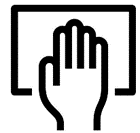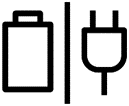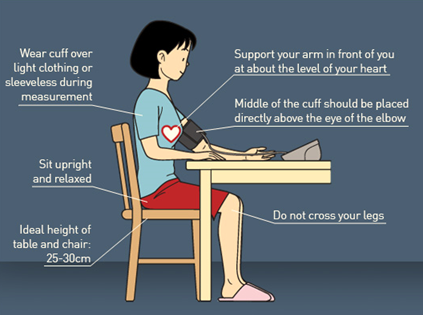Frequently Asked Questions
What is Blood Pressure?
In the most basic sense, blood pressure is a way of measuring how much force is being exerted on the walls of your blood vessels as blood flows through them.
Systolic blood pressure (the upper number on the blood pressure monitor) is the highest pressure in blood vessels when the heart contracts/beats.
Diastolic blood pressure (the lower number on the blood pressure monitor) is the lowest pressure in blood vessels in between heartbeats when the heart muscle relaxes.
What is Hypertension (High Blood Pressure)?
Hypertension occurs when the systolic blood pressure is equal to/greater than 135 mmHg & the diastolic blood pressure is equal to/greater than 80 mmHg. If left uncontrolled, hypertension can cause heart attack, stroke, dementia, kidney failure, vision loss amongst the serious consequences.
Is it normal for my blood pressure to vary?
Yes, it is quite normal for people’s blood pressure to change throughout the day & night, or in different settings where you may measure your blood pressure. Many things, such as stress levels, food or drink intake, activity levels, even time of day can all affect a person’s blood pressure reading at any given time. In fact, there are published studies that show a given person’s blood pressure can change by up to 20mm within a day, based on activity levels, food/drink intake, stress, etc. This is why it is important to take your blood pressure on a regular basis, & review the overall trend of your blood pressure readings with your doctor.
One should not be too concerned about one single measurement. It is important to take measurements every day at the same time & to know one’s own BP trend, as BP continually changes throughout the day due to the daily fluctuation cycle & many other factors.
When is the optimal time to measure blood pressure?
It is optimal to measure blood pressure within 1 hour after you get up in the morning & before you go to bed at night.
If you measure your blood pressure in the morning, take the measurement within 1 hour after you get up; before having breakfast & after visiting the restroom, rest for 1-2 minutes & then take the measurement in a sitting position.
If you measure your blood pressure at night, after resting for 1-2 minutes, take the measurement in a sitting position before you go to bed.
It is recommended to take the measurement at the same time period every day.
Will I see differences between my readings at home compared to readings in my doctor's office?
Yes, you will see some differences. This is normal & can occur for many reasons. Some of the more common reasons are:
1. A person’s blood pressure varies throughout the day, so at any given moment your blood pressure can change.
2. In terms of the amount of change; there are published studies that show a given person’s blood pressure can change by up to 20 mm within a day, based on activity levels, food/drink intake, stress, etc.
3. You may have a condition known as “White Coat Hypertension.” This is a condition in which a blood person’s blood pressure rises above its usual level when it is measured in a doctor’s office or clinical setting.
4. You may have a condition known as “Masked Hypertension.” This is a situation in which a person’s blood pressure falls below its usual level when it measure in a doctor’s office or clinical setting.
So do not be alarmed when you see differences between your readings at home compared to your readings in your doctor’s office. Discuss it with your doctor to get the best overall picture of your heart health.
How do I measure my blood pressure correctly?
1. Sit quietly for about 5 minutes with both feet flat on the floor.
2. Do not smoke, bathe, drink caffeinated drinks/alcohol or exercise 30 minutes before measurement
3. Measure at the same time every day
4. Take multiple readings & record the results using a diary or an app
Which number is more important? (Systolic/Diastolic Blood Pressure)
Both readings are important. Systolic blood pressure measures your blood pressure during a heart contraction & the other measures blood pressure between heart contractions. Usually, more attention is given to systolic blood pressure, as it indicates a major risk factor for cardiovascular disease. For your particular situation, you should discuss both measurement results with your doctor.
Why is it important to monitor blood pressure at home?
Monitoring blood pressure at home has been found useful in helping to monitor the effects of hypertension drugs, as well as detecting masked hypertension & symptoms that are hard to be found otherwise. For these & other reasons, medical organizations around the world now stress the importance of home blood pressure monitoring.
Click here to discover more from medical associations why you should monitor blood pressure at home!
Click below to find out more about Omron’s line of upper arm & wrist home blood pressure monitors.
- Upper Arm
- Wrist
What is the difference between monitoring blood pressure using a home digital monitor as opposed to getting my reading when I see my doctor?
Digital monitors measure blood pressure oscillometrically rather than by auscultation. In auscultation, stethoscopes are used to take blood pressure by listening for specific heartbeat sounds which the doctor then uses to determine systolic & diastolic pressures. Oscillometric technology measures the vibration of blood traveling through the arteries & converts the movement into digital readings.
Omron digital blood pressure monitors use the oscillometric method of blood pressure measurement. An oscillometric monitor does not need a stethoscope so the monitor is simple to use.
It is also important to note that home blood pressure monitoring allows you to monitor frequently & share the results with your doctor if you desire.
What does oscillometric technology used by home digital monitors mean?
Oscillometric technology measures the vibration of blood traveling through the arteries & converts the movement into digital readings.
Omron digital blood pressure monitors use the oscillometric method of blood pressure measurement. An oscillometric monitor does not need a stethoscope so the monitor is simple to use.
Click below to find out more about Omron’s line of upper arm & wrist home blood pressure monitors.
- Upper Arm
- Wrist
Are the readings different between an upper arm blood pressure monitor & a wrist blood pressure monitor?
It is quite possible that your readings may be different from your upper arm to your wrist as blood pressure varies throughout the human body. All Omron blood pressure monitors, whether upper arm or wrist, are validated in the same manner & have the same accuracy specifications.
Click below to find out more about Omron’s line of upper arm & wrist home blood pressure monitors.
- Upper Arm
- Wrist
Which blood pressure monitor- upper arm or wrist should I purchase?
In terms of which type of blood pressure monitor is best for you, we recommend that you discuss this with your doctor, based on your individual needs.
Upper arm blood pressure monitors are recommended for people who buy a blood pressure monitor for the first time or people who have high blood pressure & need to control it.
Click below to find out more about Omron’s line of upper arm & wrist home blood pressure monitors.
- Upper Arm
- Wrist
Are digital blood pressure monitors accurate?
All Omron blood pressure monitors are clinically proven accurate. They are clinically validated to be within the following:
- Blood pressure: within +/- 3 mmHg or 2 percent
- Pulse: within +/- 5 percent of reading
This meets or exceeds the AAMI (Association of Medical Instrumentation) standards. To understand the accuracy levels of other manufacturer’s blood pressure monitors, you need to contact them. It is always important to investigate accuracy & ease of use before purchasing a home blood pressure monitor.
Are automatic blood pressure monitors less accurate than manual aneroid/ mercury (auscultation) ones?
1: Difference in measurement technology
- Auscultation methods rely on the observers’ ability to listen for the pulse as they inflate and deflate the cuff.
- Healthcare professionals are trained to conduct the manual blood pressure measurement accurately. However, the untrained patient who is told by his / her doctor to measure the blood pressure at home, may find it difficult to do so correctly.
- Hence we need a reliable and repeatable measurement technology that enables anyone to measure blood pressure outside of the medical environment. Automatic blood pressure monitors have sensors and highly developed algorithms for blood pressure measurement. With this, the measurer’s subjective view is excluded, and surrounding noises do not interrupt the measurements.
2: Automatic blood pressure measurement does not require regular calibration
- Manual monitors require regular calibration otherwise their accuracy will be compromised.
- A reputable automatic blood pressure monitor does not require regular calibration. As long as the device is fully functional, blood pressure readings will be accurate.
- That said, Omron recommends accuracy checks of our blood pressure monitors to be conducted every two years. This is not to calibrate the device, but to ensure that there is no damage to the cuff (air leakage) or any other wear & tear of the device that could result in device malfunctions. As part of the routine check, we will conduct pressure sensor accuracy test on the device to ensure that it is still giving accurate readings.
3: Not all digital blood pressure monitors are equal
- It is hence important to ensure that digital blood pressure monitors are tested for its accuracy in terms of their design and measurement algorithms
- There are international standards and accuracy test protocols such as British Hypertension Society and European Society of Hypertension by which blood pressure monitors are tested.
- The list of clinically validated models are published on their websites as well as consolidated databases such as dabl Educational Trust.
- All Omron home blood pressure monitoring devices are tested and validated for their clinical accuracy according to at least one of these international standards.
4: Accounting for human error
- Biases associated with manual blood pressure readings
- There are numerous studies related to end-digital preference when recording manual blood pressure measurements where physicians are observed to round off the measurements to the nearest 5 and 0 value.*
- This may adversely affect the treatment and management of patients stemming from over- or under-diagnosis.
- With a digital monitor, this bias is negated.
- Inaccuracies due to incorrect cuff choice and placement
- Majority of inaccuracies from blood pressure readings arise because of inappropriate cuff sizes and misaligned placement of the cuff with the brachial artery. This is not unique to digital blood pressure readings.
- Hence Omron constantly innovates to overcome such user-related challenges.
- The IntelliWrap cuff is preformed and designed for easy one-handed operation as it fits snugly onto the arm.
- It also accounts for a wide range of arm sizes and is accurate regardless of how the user places the cuff on the upper arm.
*Burnier M, Gasser UE. End digit preference in general practice: A comparison of the conventional auscultatory and electronic oscillometric methods. Blood Pressure. 2008;17:104–109. [PubMed] [Google Scholar]
* Nietert PJ, Wessell AM, Feifer C, Ornstein SM. Effect of terminal digit preference on blood pressure measurement and treatment in primary care. Am J Hypertens. 2006;19:147–152. [PubMed] [Google Scholar]
How often should I send my Omron blood pressure monitor for checking?
The accuracy of Omron blood pressure monitor has been carefully tested & is designed for a long service life. It is generally recommended to have the unit checked every two years to ensure correct functioning & accuracy. Please consult your local Omron representative for the check.
How to ensure optimal service life of your product?

Proper maintenance of your product can significantly extend its lifespan (per the durable period) and ensure optimal performance throughout its usage.
Here are some important tips:
- Only use batteries or AC adapter specified for the product. Use of unsupported batteries may damage and/or may be hazardous to the monitor. e.g. only use “AAA” alkaline batteries with the monitor HEM-7600T.
- Do not use different brands of batteries or new and used batteries together.* Remove the batteries if the unit will not be used for a long period of time. Do not use batteries after their expiration date.
- Periodically check the batteries to ensure they are in good working condition.
- Do not store at locations exposed to extreme temperatures, humidity, direct sunlight, dust or corrosive vapours such as bleach. For more information on care and maintenance, please refer to the Instruction Manual.


















